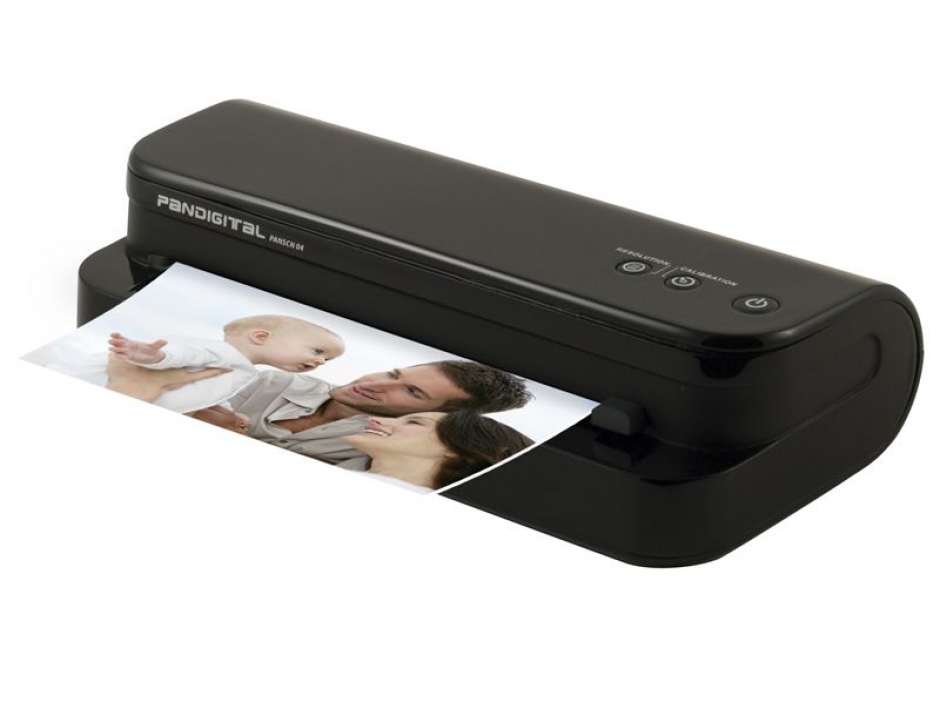The idea of a scanner that can breeze through a stack of photos from the family album is very appealling. Pandigital's Photolink One-Touch Scanner promises to do just that (and without need to hook it up to a computer, no less). But, this product gets just about everything wrong; so, hold onto your hats...this is going to be a bumpy review!
Before we get to how well it works, let's focus on how it works.
The design is similar to an old HP machine I used to have. You feed each photo into a slot where a motorized roller engages it and pulls it through the scanner. Settings on the device allow you to select 300 or 600 dpi resolution, adequate for most purposes. The scanner is designed to be used with a computer (by scanning onto an SD card) or directly with a PC via USB.
In theory, using this semiautomated design could be faster than using most flatbed scanners. In theory, this should be a very simple device that anyone could use, regardless of computer savvy: just feed the pictures in the slot and capture the output to the SD card. From there the images could be read by a computer or used in a photoframe (Pandigital happens to make those, too).
Theory and practice diverge as soon as you open the box.
First, I was struck by the warning label affixed to the top of the scanner. First, it warns that photos should not be sent through the scanner without first being put into a "sheath", a kind of photo condom. Two sheaths are provided with the unit and they are flimsy and static charged. Using them negates much of the "speed" of this unit over flatbed scanners. Instead of lifting the cover of the scanner, you now have to lift the top of the carrier, slip in the photo, close the carrier and then insert it into the unit. I tried scanning with and without the scanner and didn't see much difference, though apparently it is used in helping with an "autocropping" function based on the black background color of the carrier. Whether the carrier also has some function in not having the units rollers eat the photo is not specified. The carriers definitely seem flimsy and were a nusance when working through a large stack of photos. Strike One.
More warnings. The scanner's label also warned "To avoid changing Windows Explorer settings on your PC, scan all phots BEFORE connecting USB cale to PC to complete transfer". I'm not even sure what that means, but I don't want my scanner touching my operating systems settings under any circumstances. Strike Two.
Between the lines:
My test scans all featured fine white lines that ran the length of the images. The documentation indicated that these were caused by the scanner being out of calibration. A flimsy piece of paper labled "calibration sheet" is supplied to adjust the scanner. However, the chances of me being able to locate that paper in six months, or that if found it would not be torn, creased or mangled beyond use are slim and none. At the very least such a sheet should be on more solid stock.
As it turned out, calibration did not cause the white lines to go away. Strike three. A scanner that can't scan. Say no more.



